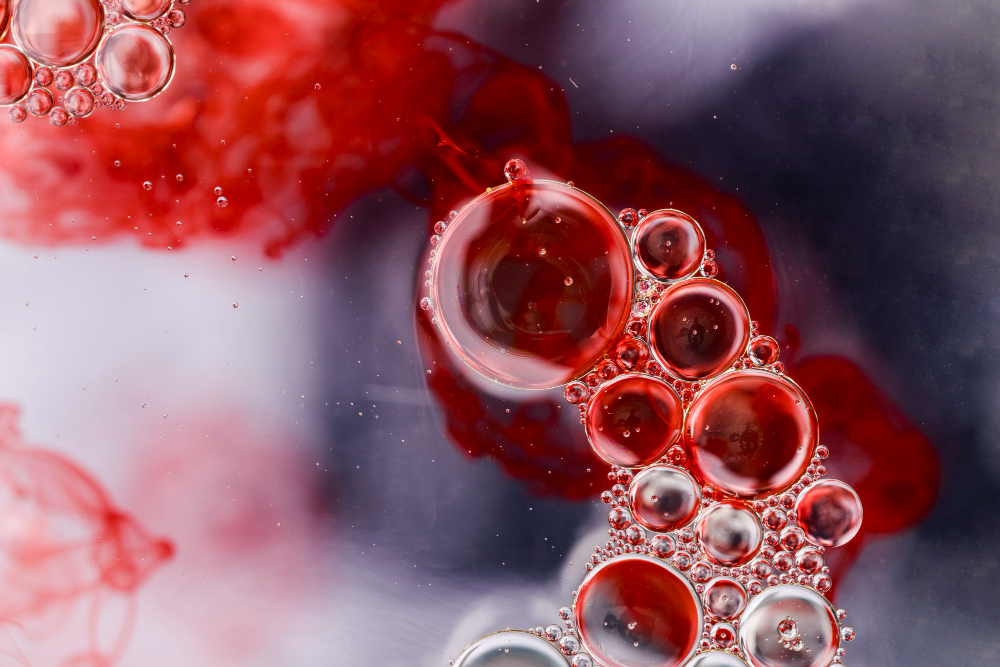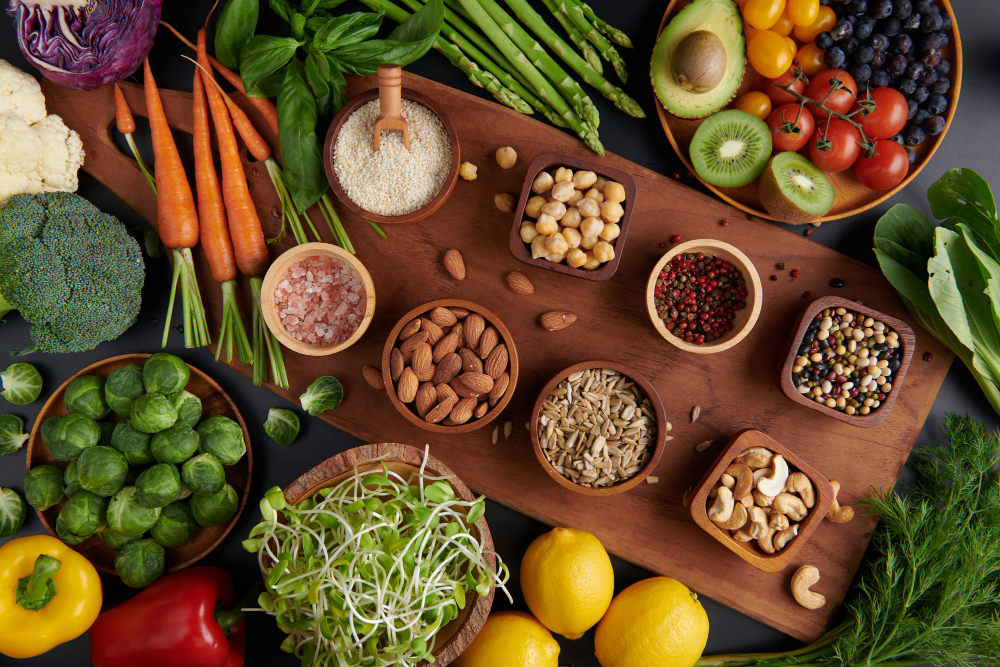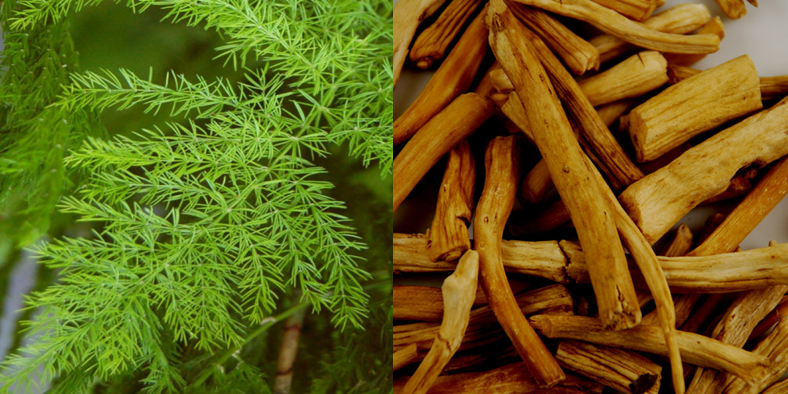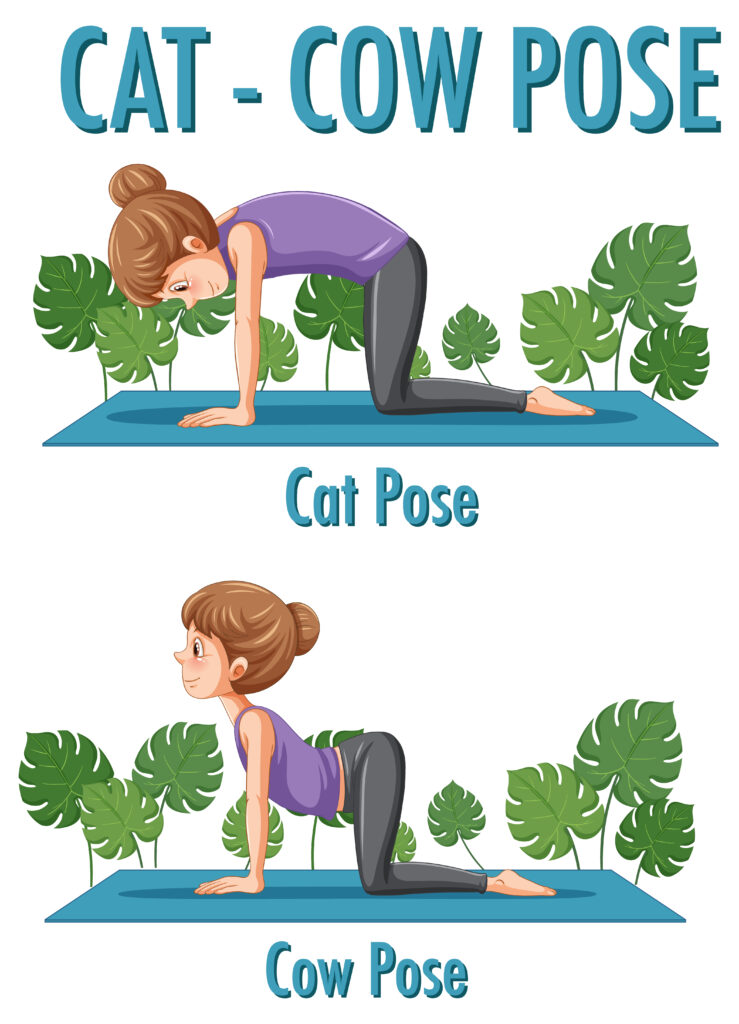

Ayurveda offers a holistic approach for premenstrual symptoms treatment, promoting overall well-being and balance during your menstrual cycle.
Premenstrual symptoms can be a challenging and uncomfortable part of many women’s lives.
In this article, I will dive into Ayurvedic remedies, their physiological benefits, and the scientific support behind them.
Discover how dietary adjustments, a blend of herbal supplements, yoga, and pranayama can transform your menstrual health.
I personally get relief from menstrual syndrome by practicing yoga 3 times a week and only feed myself with fresh food.
All my meals are without processed and industrial food.
I have had no breast pain, headaches, mood shifting and belly cramps since that time. I encourage you to try, among the advices, what fits you, especially observing your diet and you will recover and get relief naturally.
Which food worsens the condition and which improves it. Because food also affects the balance of our hormones as well as the quality of our mind.
What is premenstrual syndrome (PMS)
Premenstrual Syndrome (PMS) is a condition that affects many women in the days or weeks leading up to their menstrual period. While the exact cause of PMS is not entirely understood, it is related to hormonal fluctuations and their effects on our various body systems.
Hormonal Fluctuations:
During the menstrual cycle, there are significant fluctuations in hormone levels, primarily estrogen and progesterone. In the first half of the menstrual cycle (follicular phase), estrogen levels rise, and then they decline as the ovulation phase approaches. After ovulation, progesterone levels increase.
What is the role of estrogen in your body?
Estrogen plays a role in regulating serotonin, a neurotransmitter associated with mood. When estrogen levels drop in the latter part of the menstrual cycle, it can affect serotonin levels, potentially leading to mood swings and irritability.
It can also affect fluid balance in the body. That’s why some women experience bloating and water retention due to these hormonal shifts.
What is the role of Progesterone?
Progesterone influences the GABA (gamma-aminobutyric acid) receptors in the brain, which have a calming effect. When progesterone levels drop before menstruation, it can lead to increased anxiety and irritability.
Now you understand what is behind your mood changes…
Inflammation and Immune Response:


PMS may be associated with an increased inflammatory response in the body. This could be related to the release of certain immune factors in response to hormonal fluctuations.
For example, prior to the onset of menstruation, the cells composing the uterine lining, known as endometrial cells, start to deteriorate. This deterioration leads to the release of significant quantities of inflammatory prostaglandins. These substances result in the narrowing of blood vessels in the uterus and induce the contraction of the muscular layer, ultimately causing discomforting cramps.
Neurotransmitter Changes:
Premenstrual syndrome is associated with changes in various neurotransmitters in the brain. For example, dopamine and norepinephrine levels may fluctuate, which also influence mood and energy levels.
That is why you feel tired before, during and after your periods.
Genetic and Lifestyle Factors:
There is evidence to suggest that genetics may play a role in PMS susceptibility.
Lifestyle factors, such as stress, poor diet, and lack of exercise, also exacerbate PMS symptoms.
It is important to exercise regularly to maintain fluids circulations in the body and stay in homeostasis state.
Psychological Factors:
Your psychological state affects premenstrual syndrome by increasing the symptoms. Stress, sadness, and low energy can create a feedback loop.
Individual Variability:
It’s important to note that not all women experience PMS to the same degree, and some may not experience it at all.
But PMS affects 20 to 50% of women of childbearing age
Individual variations in hormone sensitivity, genetic predisposition, and lifestyle factors all contribute to the variability of PMS symptoms.
In summary, PMS is a multifactorial condition influenced by hormonal fluctuations, neurotransmitter changes, immune responses, genetics, and lifestyle factors. All these factors lead to the diverse range of physical and emotional symptoms associated with PMS.
So, what are the solutions?
Natural Remedies, Yoga, and Pranayama for a Healthier Menstrual Cycle
Herbal Supplements: The Power of Nature


Depending on the symptoms experienced, you can choose the plants adapted to your case.
All advice that I give you as a naturopath and ayurvedic therapist has to be confirmed by adapting them according to your constitution so your doshas and your medical history. It is necessary to consult to have the best diagnostic and efficiency.
1. Ashwagandha (Withania somnifera):
This adaptogenic herb is known for reducing stress by lowering cortisol levels, leading to improved emotional stability and reduced anxiety. The physiological benefit of lower cortisol is well-documented in stress reduction studies.
Consumption of ashwagandha is not recommended without medical advice, or contraindicated, in people who are pregnant or breastfeeding, suffering from intestinal disorders, suffering from hyperthyroidism, suffering from hemochromatosis.
Recipe t: Mix 1/2 tsp of Ashwagandha powder in warm milk or a dairy-free alternative. Consume before bedtime.
2. Shatavari (Asparagus racemosus):


Rich in phytoestrogens helps to correct the hormonal balance and makes the cycle regular. It also helps lower the activity of mediators that cause pain and cramps during periods.
In addition to the bioactive compounds, the various parts of the plant also contain a rich supply of beneficial nutrients and minerals, including manganese, copper, zinc, cobalt, potassium, selenium, calcium, and magnesium. Furthermore, the plant contains essential vitamins such as Vitamin A and ascorbic acid. Notably, it also contains crucial fatty acids like gamma-linolenic acid, which plays a significant role in the treatment of conditions such as high cholesterol, heart disease, mood disorders, diabetes, and arthritis.
Anyone taking diuretic medication should avoid shatavari. The supplement may also cause low blood sugar. People taking medications or herbal remedies to lower blood sugar should refrain from taking shatavari
Recipe: Brew Shatavari root, 1-2 grams per day, in hot water for a soothing tea.
3.Triphala (A Blend of Three Fruits):
Acting as a mild laxative. Triphala aids with constipation and bloating and common premenstrual discomforts. Its physiological benefits in promoting healthy digestion are well-documented.
Triphala is contraindicated for children, pregnant and breastfeeding women.
Recipe: Prepare a Triphala decoction by steeping 1 tsp of Triphala powder in hot water for 10-15 minutes.
4. Brahmi (Bacopa monnieri):
Brahmi’s cognitive-enhancing effects are scientifically supported. It helps maintain mental clarity and emotional stability.
This plant is the perfect ally in combating stress, it is an adaptogenic plant that has an anxiolytic and soothing effect. It works positively in cases of physical and psychological stress, notably by reducing the cortisol levels (the stress hormone) and supporting neurotransmitter activity.
Brahmi is known to help alleviate Alzheimer’s symptoms, a disease characterized by neuron degeneration and the progressive decline of cognitive faculties and memory. Numerous recent scientific studies have demonstrated that Brahmi contributes to maintaining brain performance as it directly affects the brain’s microcirculation. It is also believed to alleviate the effects of Parkinson’s disease and shows very encouraging results in the treatment of depression.
Brahmi is highly valued by meditation practitioners because it helps purify the mind, and yogis attribute to it the power of elevating the spirit and facilitating the opening of the 7th chakra.
It serves as an excellent remedy for relieving arthritis, gout, and other inflammatory diseases. It soothes symptoms of irritable bowel syndrome and gastrointestinal or digestive disorders (gastric ulcers, flatulence, indigestion, constipation).
Brahmi has powerful antioxidants, which help protect our body against free radicals. It is also a powerful anti-inflammatory which allows better cerebral circulation. Brahmi is also known to control blood sugar levels in diabetic patients and can help improve the symptoms of hypoglycemia.
Although the use of this supplement is considered safe, as a precaution, young children, pregnant and breastfeeding women should avoid taking it.
It is also not recommended for people suffering from urinary obstructions or emphysema.
It may interact with other medications, such as certain sedatives, antidepressants (amitriptyline), neuroleptics (phenothiazines), and also thyroid treatments.
Brahmi has few side effects, however certain undesirable effects may be felt (especially when taken on an empty stomach): dry mouth, nausea, diarrhea, stomach aches and cramps.
Recipe: Brahmi can be consumed as a herbal tea or in capsule form. You can also apply Brahmi oil on your scalp to soothe your mental activity.
Dietary Adjustments: Nourishing Your Body


It is not new…
A balanced diet with whole, unprocessed foods provides essential nutrients, maintains stable hormonal system, blood sugar levels, and supports emotional well-being.
Reducing salt and sugar intake prevents water retention and mood swings, with scientific studies backing the benefits of these dietary adjustments.
Stay well-hydrated with warm water or herbal teas aids in digestion and reduces bloating. Proper hydration supports overall bodily functions.
Choose your diet consciously and be aware that the optimal functions of your body depend, among other things, on the quality of the food you give it.
Lifestyle Recommendations: Mind-Body Balance
Yoga and Meditation:
Scientific studies and practitioners confirm that regular yoga and meditation reduce stress, balance the nervous and hormonal system, leading to homeostasis, decreasing anxiety and promoting emotional stability.
What yoga postures to alleviate PMS:
You can start by practicing this 3 poses:
- Child’s Pose: Relieves Tension in the Lower Back


Excellent in increasing blood circulation, as it aids in promoting the flow to the spine, brain, and organs.
The torso rests on or between the thighs, which helps to promote digestion. As you breathe in and out while in the posture, your belly expands and allows for a massage of the digestive organs. This helps move your digestion along, and can help alleviate gas pain as well.
Brings balance to both the mind and the body through strengthening, stretching, and connection to the inner-self. As a result, practicing Child’s Pose gives you that boost that you need both mentally and physically to move through the day with energy and focus.
- Cat-Cow Pose,


It stretches your belly muscles and helps reduce menstrual cramps, and also increases flexibility and strengthens your spine!
- and Supine Bound Angle Pose


This pose helps to open the hips and stretch your pelvis region. It’s great for helping to relieve symptoms like stomach cramps and bloating by stretching the muscles and increasing circulation. It can also be helpful in reducing lower back pain.
Adequate rest and sleep
It supports hormonal balance and emotional well-being. Sleep studies show a direct link between quality sleep and emotional stability.
If you want to experience a complete yoga class to relief your PMS, click here to get your free class.
Abhyanga, or self-massage
Do it with warm sesame oil, improves circulation and relaxes muscles, providing physical relief backed by physiological benefits.
Aromatherapy: The Power of Scent
Inhaling calming essential oils like lavender, rose, or chamomile activates your olfactory system, promoting relaxation and reducing emotional tension.
Aromatherapy recipe: add a few drops of your chosen essential oil to a diffuser.
Nasya:
It is a nasal application of herbal oils that can alleviate headaches and sinus congestion, providing psychological relief. You can use 1 or 2 drop of sesame oil in each nostrils.
Pranayama:
Deep breathing exercises, such as Nadi Shodhana (Alternate Nostril Breathing), balance the autonomic nervous system and so lead, among other things, to emotional stability.
Conclusion
By incorporating these ayurvedic remedies and routines, you can find relief from premenstrual symptoms or simply get rid of them while benefiting from the physiological and scientific advantages they offer.
No need for chemical supplements, all is in nature and your body. These natural solutions support your menstrual health and enhance your overall quality of life. Embrace the power of Ayurveda and Yoga to create a healthier and more balanced menstrual cycle.
References:
The Effect of Yoga on Menstrual Disorders
Association among Premenstrual Syndrome, Dietary Patterns, and Adherence to Mediterranean Diet
